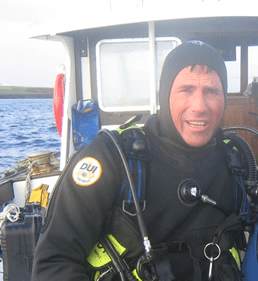
What Are Scuba Tanks Made Out Of (Steel VS Aluminium Scuba Tanks)

Steel vs aluminium scuba tanks
If you are wondering what scuba tanks made out of, then this brief article explains the two different types of scuba diving tank and the material they are made from.
What are scuba tanks made out of? Scuba tanks are made from two types of material, which is aluminium alloy or steel. Each tank type has different properties; for example steel cylinders are tougher than aluminium making them resistant to damage. Whereas aluminium tanks more commonly used by dive shops, much lighter and less expensive than steel tanks.
The best way to do more diving where scuba cylinders are provided as part of the dive package, is to book yourself on a scuba diving liveaboard. You can check the latest and best deals on liveaboards using the following window:
What materials are scuba tanks made out of in more detail?
Scuba diving cylinders are either made of steel or aluminum alloy (or in the United States Aluminium).
As far as air and gas cylinders are concerned, 6061 aluminium and 6351 aluminium are widely used in the extrusion process to make dive tanks for scuba diving.
Whereas steel is an alloy of iron and carbon, where sometimes other elements are also used. Steel is known for its high tensile strength and low cost.
More Reading: Do empty scuba tanks float? (This depends on the material they are made from)
Advantages and disadvantages or steel tanks vs aluminium tanks
Each dive tank type has their advantages and their disadvantages as a result of the material they are made from.
For example:
- Steel cylinders or dive tanks are tough and resistant to external damage.
- Steel tanks are susceptible to rusting, which means they need proper care to avoid any internal rust.
- Care needs to be taken to not damage the powder coating on steel tanks on the outside to avoid them rusting and shortening their life.
- Steel tanks are heavier and are also negatively buoyant.
- The highest capacity cylinders are made from steel due to the strength properties of steel.
- Due the the softer properties of aluminium cylinders, they are more susceptible to external dents, dings and scratches than their steel counterparts.
- Aluminium tanks are more resistant to internal corrosion.
- Dive tanks made from aluminium are much lighter than their steel equivalent.
- In order for aluminium tanks to withstand the high pressure of air when filled, the walls of aluminium cylinders are thicker than steel tanks.
- Aluminium tanks are also less expensive than steel tanks.
There’s no doubt that the aluminium dive tank is the most popular type of dive tank used. You’ll find that wherever you dive in the world, most dive shops will use aluminium tanks by choice.

How aluminium scuba tanks are made
I think this video about how aluminium scuba tanks are made is fascinating and certainly worth a watch. The video runs from the aluminium extrusion process, through to powder coating the tanks to create a more colourful look.
How to make an aluminium scuba tank
I hope you enjoyed this article about what are scuba tanks made out of
I’d love to hear from you. Tell us about your adventures of diving and snorkeling, in the comments below. Please also share your photos. Either from your underwater cameras or videos from your waterproof Gopro’s!
If this article hasn’t answered all of your questions. If you have more questions either about snorkeling or scuba diving (or specifically about what are scuba tanks made out of), please comment below with your questions.
There will also be many more articles about scuba diving (and snorkeling) for you to read and learn about these fabulous sports.
Have fun and be safe!
